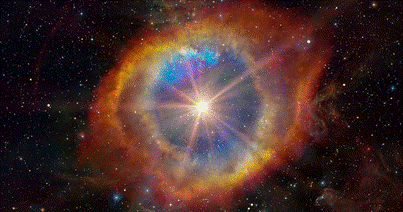Exploring ‘Super-luminous supernovae exploded rapidly and decayed slowly’
New Delhi: Researchers at the Arayabhatta Research Institute of Observational Sciences (ARIES) Nainital an autonomous research institute under the Department of Science and Technology (DST) Govt. of India found that SN 2010kd, a super-luminous supernova stands out with the amount of mass as well as Nickel ejected during explosion, which is much more than seen in case of normal core-collapse supernovae.
Supernovae are a kind of energetic explosions where the core of massive stars (a few times to that of mass of our Sun) go to a catastrophic phase of explosion liberating huge amounts of energy. These events are visible through very far away distances much beyond our own solar system. Super-luminous supernovae are a special type of stellar explosions having energy output 10 or more times higher than that of standard supernovae.
The scientists said that the larger ejected mass of Super-luminous supernovae SN 2010kd indicates that the related star evolution might be different from other possible progenitors of normal core-collapse supernovae with a different possible underlying physical mechanism responsible for producing such energetic supernovae with large ejected mass and Ni. It exploded with a larger velocity but decayed shower than other similar supernovae.
The super-luminous supernova titled SN 2010kd is rather nearby — approximately at a distance of 1.5 Giga light-years discovered by Robotic Optical Transient Search Experiment (ROTSE-IIIb) telescope as a part of ROTSE supernova verification project in the USA on 14 November 2010 embedded in a dwarf host galaxy towards Leo constellation.
In the study published in the journal Astrophysical Journal led by Amit Kumar, a Ph.D. student at ARIES Nainital working under Dr. S. B. Pandey along with contributions by Prof. Carl Akerlof (Uni. of Michigan, Ann Arbar), Prof. J. Craig Wheeler (Uni. of Texas, Austin), Prof. Jozsef Vinko (Uni. Of Szeged, Hungary) and other team members analysed all the data of this super-luminous supernova SN 2010kd in the light of known physics and proposed models. They carried out analytical light-curve modeling of the optical data taken from ROTSE IIIb and 1.04m Sampurnanand Telescope and spectral modeling of the data taken using 8-10m class optical telescopes for this supernova. The data was also compared with the know published a set of more than half a dozen of similar supernovae around similar distances.
The observations of the scientists show that parameters like rotation and metallicity play a crucial role in stellar explosions and that there are many more types of possible progenitors existing in diverse environments in their host galaxies than previously known.
Comparing the line velocities as obtained using spectral modeling, the scientists showed that SN 2010kd exploded with a larger velocity but decayed shower than other similar supernovae. The elected mass of the Oxygen and estimated values of luminosity of other spectral lines was also found to be higher for SN 2010kd.

